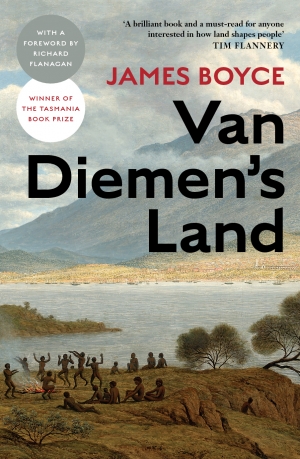Archive
Alison Broinowski reviews 'Roma the First: A biography of Dame Roma Mitchell' by Susan Magarey and Kerry Round
Roma Mitchell came first in nearly everything. Not only at school and university, but in becoming Australia’s first female OC, Supreme Court judge, Boyer Lecturer, university chancellor and state governor. But she had no inside track to success. Her father was killed in World War I, her mother survived on his pension and the generosity of friends, and Roma and her older sister were taught by the Sisters of Mercy for nothing.
... (read more)Selling Sex provides a comprehensive history of prostitution in Australia. In 342 pages, Raelene Frances (currently Dean of Arts at Monash University) describes the changing nature of sex work in Australian society from the colonial period to the present day. Frances’s text is brilliantly researched and provides many important insights for readers interested in Australian history and culture, as well as the history of sex and gender.
... (read more)In all intellectual disciplines there is a tendency to run in herds. It is the line of least resistance; it offers personal and professional rewards; and sometimes the herd, if capably led, is impressive in the way it rushes so quickly in the appropriate direction. The herd is often correct; but when it is on a stampede, is does not easily change course. This is a biographical dictionary of those Australian and New Zealand economists who often led – or opposed – the herd.
... (read more)That scourge of religion, Richard Dawkins, declared recently that the past year had been a bad one for God. He was probably referring to the success of his polemics against religion and to the tidal wave of kindred writings by other public intellectuals, such as Christopher Hitchens and Sam Harris. We do not know whether God would agree; and whether we should agree depends partly on how we read ‘success’. The books certainly sold and are widely acclaimed, and may even have garnered apostates. But for all their élan and entertainment, they are essentially concoctions and elaborations of arguments and observations made by earlier, more penetrating thinkers. If advancing understanding is at issue, as opposed to securing the public’s mobile attention, then we should judge that the tree of knowledge hasn’t burgeoned much lately, not on the theological branches, anyway.
... (read more)Every biography holds at least three stories, all of which, though very different, are closely linked. First of all, of course, there is the story told on the page – the story of someone’s life. Just below that is the story that consists of bits left over, all those awkward jagged pieces of raw or irrelevant data that have been eliminated. Some rejected from the beginning, others taken out at the last minute after much thought. But pervading the whole, though they may not be directly part of it, are the experiences and opinions of the people who provided so much of the information, whose life stories are invested in the final book.
... (read more)Our retail establishment has never received the spotlight focused on its predecessors, the miners, pastoralists, makers and land boomers. The next wave, the shopkeepers – the Foys, McLellans, Treadways, Nathans, Morans and Coles – are mainly remembered by fading signs above grand buildings occupied by others. (For a wonderful example of history in pressed cement, stand in Prahran’s Cato Street car park and look east.) Melbourne’s glittering exception is the Jewish-Anglican Myer dynasty.
... (read more)Henry Lawson epitomised the weather-beaten laconic when he said: ‘Death is about the only cheerful thing in the bush.’ A century later, Bill Bryson, in Down Under (2000), picked up where Lawson left off: he defined the ‘real Australia’ as places where ‘no sane person would choose to live’. Somewhere in between, Patrick White created one of those dubious entities, a sweat-stained eccentric in an undaubed slab hut who told the explorer Voss that the country ahead of him was all stones and thorns, a place where anyone crazy enough to go out there might celebrate a ‘high old Mass ... with the skull of a blackfeller and his own blood’.
... (read more)The award of the 1915 Nobel Prize in Physics to William Henry Bragg, sometime Elder Professor of Mathematics and Experimental Physics at the University of Adelaide, and his Australian-born son William Lawrence Bragg is one of the icons of Australian science. Their ‘services in the analysis of crystal structure by means of X-rays’ is mentioned in the guide for new Australians, Becoming an Australian Citizen (2007), so we can put them up there with Don Bradman and Captain Cook.
... (read more)For many Australians, the Burke and Wills odyssey is a sketchy episode in our history. For Kevin Rabalais, a recent immigrant to this country from New Orleans, the fragments of the story were obviously an intriguing premise for a novel. His first novel, The Landscape of Desire, retraces this expedition and the later one led by Howitt that set out to find the missing explorers. The strange thing is that the author does not approach his work as historical fiction, but as literary fiction.
... (read more)This memoir moves through points of intensity in Kate Llewellyn’s life, from an idyllic childhood at Tumby Bay on the Eyre Peninsula in the 1940s through to her leaving Adelaide to make a new life in Sydney in the 1980s. By this time she is a recognised poet, but her life is in turmoil. The book does not set out to tell a success story; rather, it describes that uneven movement from childhood innocence through adult experience, with all naïveté, self-delusion, idealism, and hard-learned lessons. It is quintessentially a poet’s book, its stories heightened by arresting images, its movement circling rather than linear.
... (read more)








